Coconut water matcha is the cool, calm energy boost your summer has been missing. It’s hydrating, naturally sweet, and gives you clean, focused energy without needing a blender or milk. I first mixed it up on a hot Charleston afternoon, curious if it could replace my iced coffee. One sip and I was hooked—smooth green tea with a hint of coconut, no jitters, no crash. In this guide, I’ll show you how to make coconut water matcha in minutes, why it works so well, and how to turn it into a simple daily ritual. Looking for something cozy instead? Try my Earl Grey Matcha Latte it’s creamy, calming, and just as easy to make.
Table of Contents
Table of Contents
What Makes Matcha So Special?
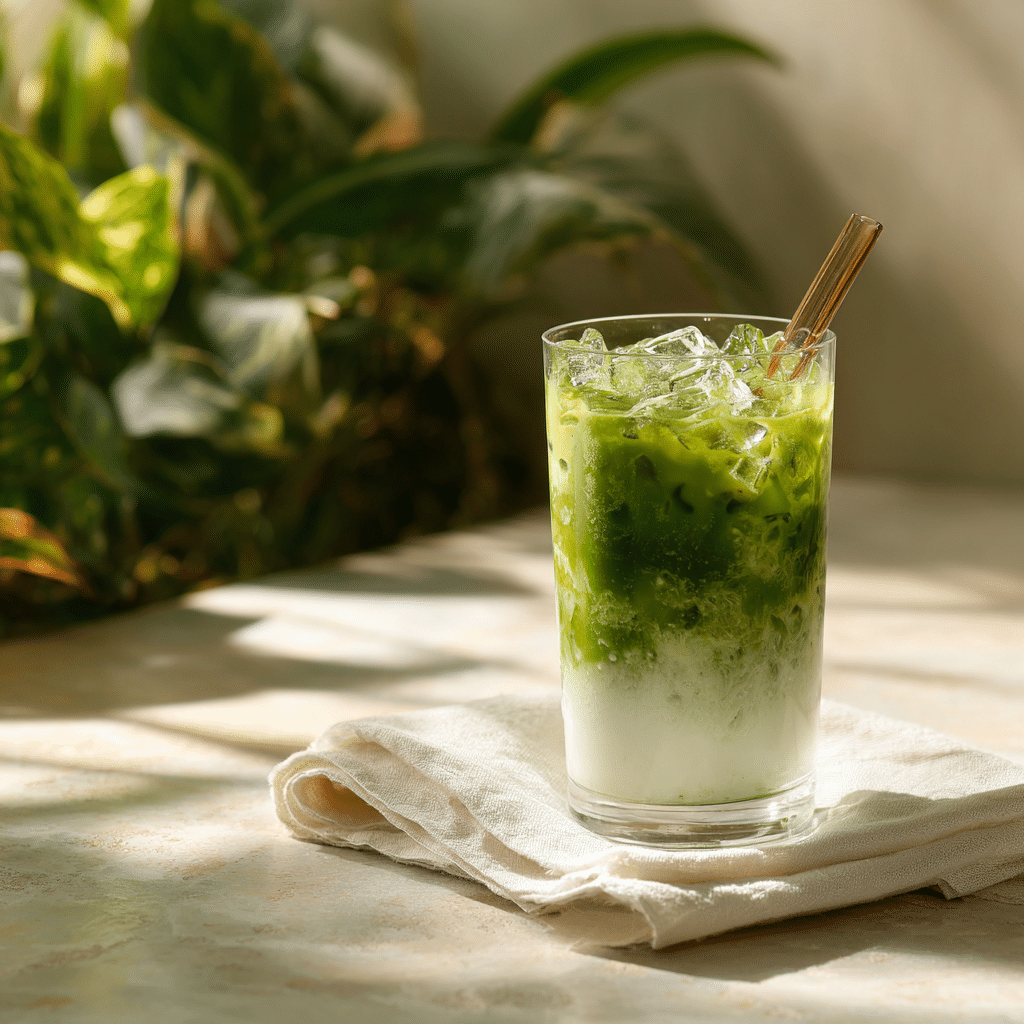
I get this question a lot “Jamie, what is matcha, exactly?”
Here’s how I usually explain it: matcha is a kind of green tea, but instead of soaking the leaves in hot water and tossing them, you drink the whole leaf. It’s ground into a fine, bright green powder. You whisk it into water and sip it straight.
Matcha comes from Japan and has been around for centuries. What makes it different is how it works—it has natural caffeine, plus something called L-theanine, which helps you stay focused without feeling wired.
Matcha is simple, natural, and a little special. That’s why I reach for it on warm afternoons when I want a break—but still need to keep going. It’s what gives coconut water matcha its energizing and refreshing appeal. Don’t miss my no-bake Matcha Tiramisu—it’s creamy, chilled, and matcha-forward.
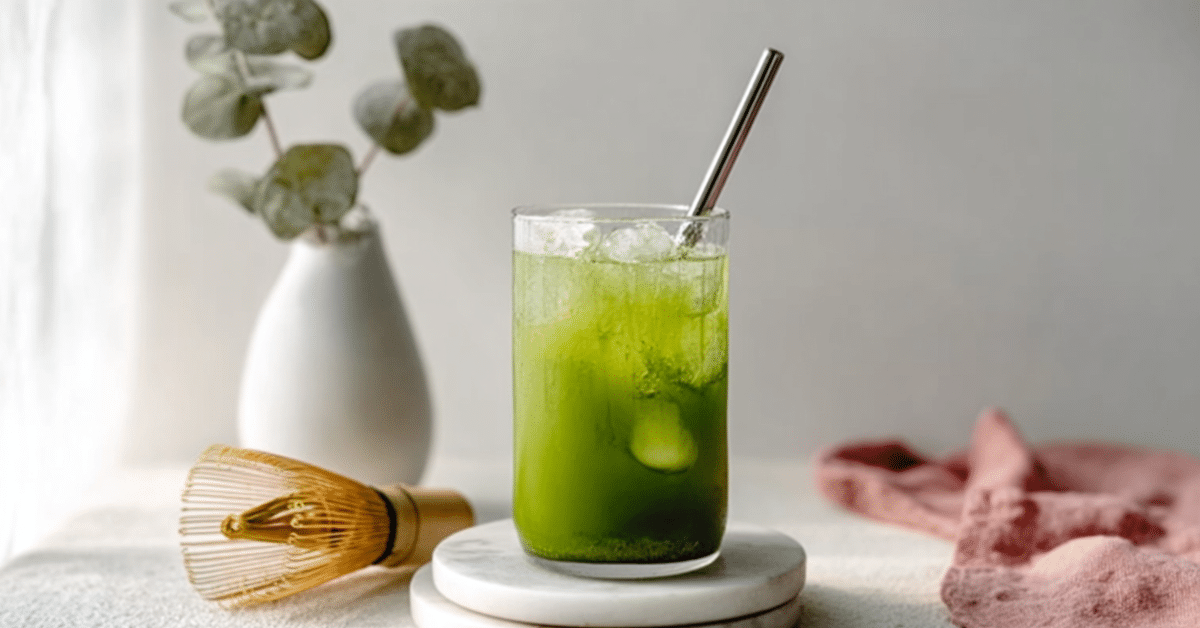
Coconut Water Matcha
Ingredients
Equipment
Method
- Heat about 2 tablespoons of water to 175°F (not boiling).
- Sift 1 tsp matcha into a bowl or cup. Add hot water and whisk until smooth and frothy.
- Fill a glass to the top with ice cubes.
- Pour chilled coconut water into the glass, leaving an inch at the top.
- Slowly pour the matcha over the ice to create a layered effect.
- Stir gently if desired or sip as-is to enjoy the layers.
Nutrition
Notes
Tried this recipe?
Let us know how it was!Matcha vs. Regular Green Tea: What’s the Difference?
Not sure how matcha compares to regular green tea? Here’s a quick breakdown that shows why I reach for matcha—especially when making coconut water matcha.
| Feature | Matcha | Regular Green Tea |
|---|---|---|
| Form | Powdered | Dried leaves |
| Preparation | Whisked into water | Steeped, then removed |
| Leaf consumption | Whole leaf (you drink it) | Just an infusion |
| Antioxidant content | Very high | Moderate |
| Caffeine | Moderate, steady release | Lower |
| Flavor | Earthy, smooth, umami | Mild, light, sometimes grassy |
| Common use | Lattes, rituals, smoothies | Basic tea, iced tea |
Matcha is more concentrated and offers a full-body experience—you’re drinking the leaf itself. That’s why I use it in my daily coconut water matcha ritual. It’s simple, energizing, and actually delivers the benefits green tea promises.
Understanding the Taste: What Does Matcha Taste Like?
The first time I tasted matcha, I wasn’t sure if I liked it. It was green, earthy, and a little grassy—nothing like sweet drinks I was used to. But it had a clean, smooth feel that stayed with me.
So, what does matcha taste like? It’s bold but not bitter. Picture fresh green tea with a naturally rich and full-bodied taste.
When I first poured it into coconut water matcha, something clicked. The light sweetness from the coconut softened the edge and made it instantly refreshing. Now, it’s my go-to when I want something cold, clean, and energizing.
Why You’ll Fall in Love With Coconut Water Matcha
I made my first coconut water matcha by accident—hot day, no milk, no blender. Just matcha, cold coconut water, and ice. It turned out so refreshing, I found myself making it again the next day. And the day after that.
Here’s why this drink might just become your new favorite:
- Naturally sweet and completely dairy-free : no sugar or milk needed.
- Full of electrolytes : coconut water helps keep you hydrated.
- Gentle energy, no crash : matcha’s caffeine feels smooth and steady
- No blender, no fuss : just whisk and pour
- Perfect for warm days : cool, clean, and ready in minutes
If you’re looking for a refreshing drink that feels good and takes almost no effort, this is it.
What You Need for This Coconut Water Matcha Recipe
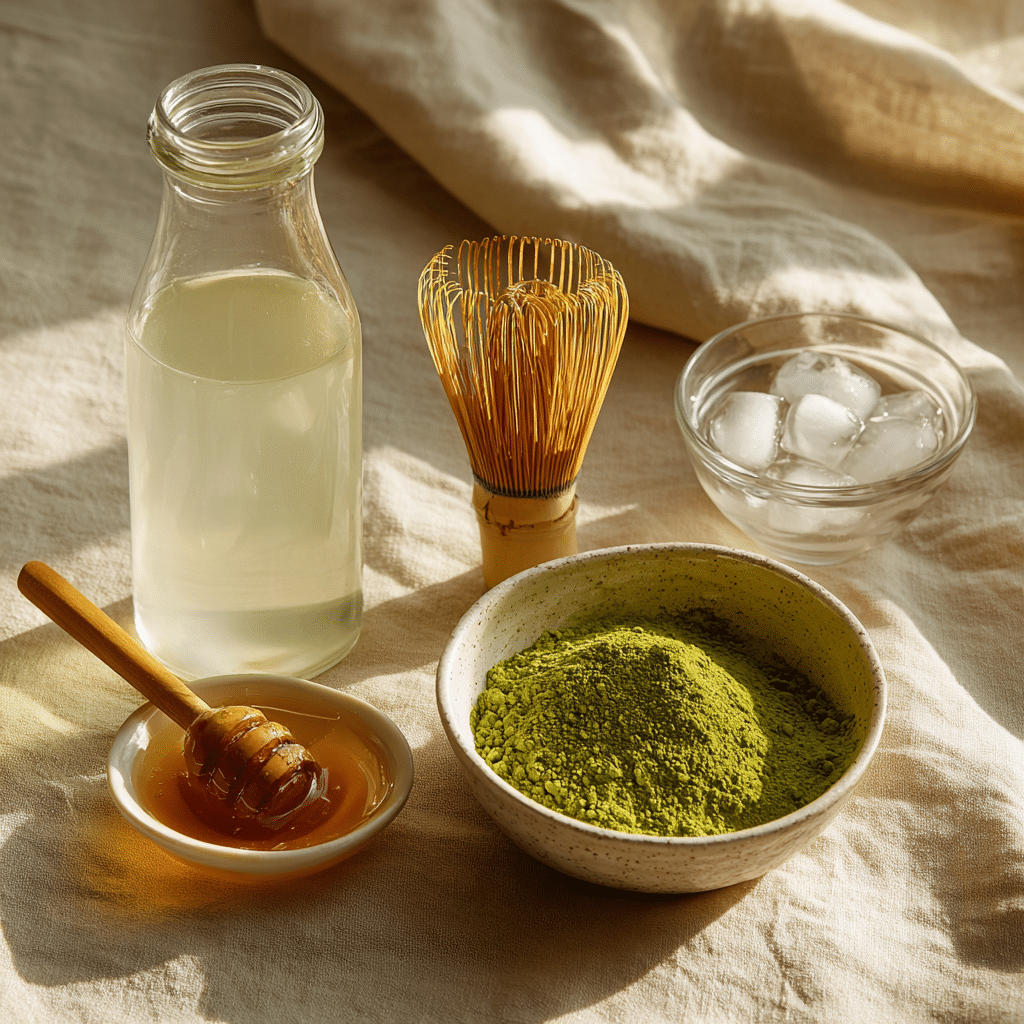
You don’t need much to make this. That’s part of the magic. Here’s what goes into a simple, refreshing coconut water matcha recipe:
- Coconut water – chilled; clear or pink is fine (pink just means natural oxidation)
- Ceremonial-grade matcha powder – bright green and smooth, not bitter
- Hot water – around 175°F (don’t boil it—too hot will make matcha taste harsh)
- Ice cubes – for a cold layered effect
- Optional: a little honey, maple syrup, or even a splash of coconut milk if you want it creamier
Tip: sift your matcha if it looks clumpy—it’ll whisk up smoother.
How to Make Coconut Water Matcha at Home
You don’t need a blender or barista skills. Just follow these steps and you’ll have a chilled, layered drink in minutes.
Here’s how to make coconut water matcha:
1. Heat a little water – about 2 tablespoons, around 175°F. Not boiling.
2. Whisk your matcha – sift 1 tsp of matcha into a bowl or cup, add the hot water, and whisk until smooth and frothy.
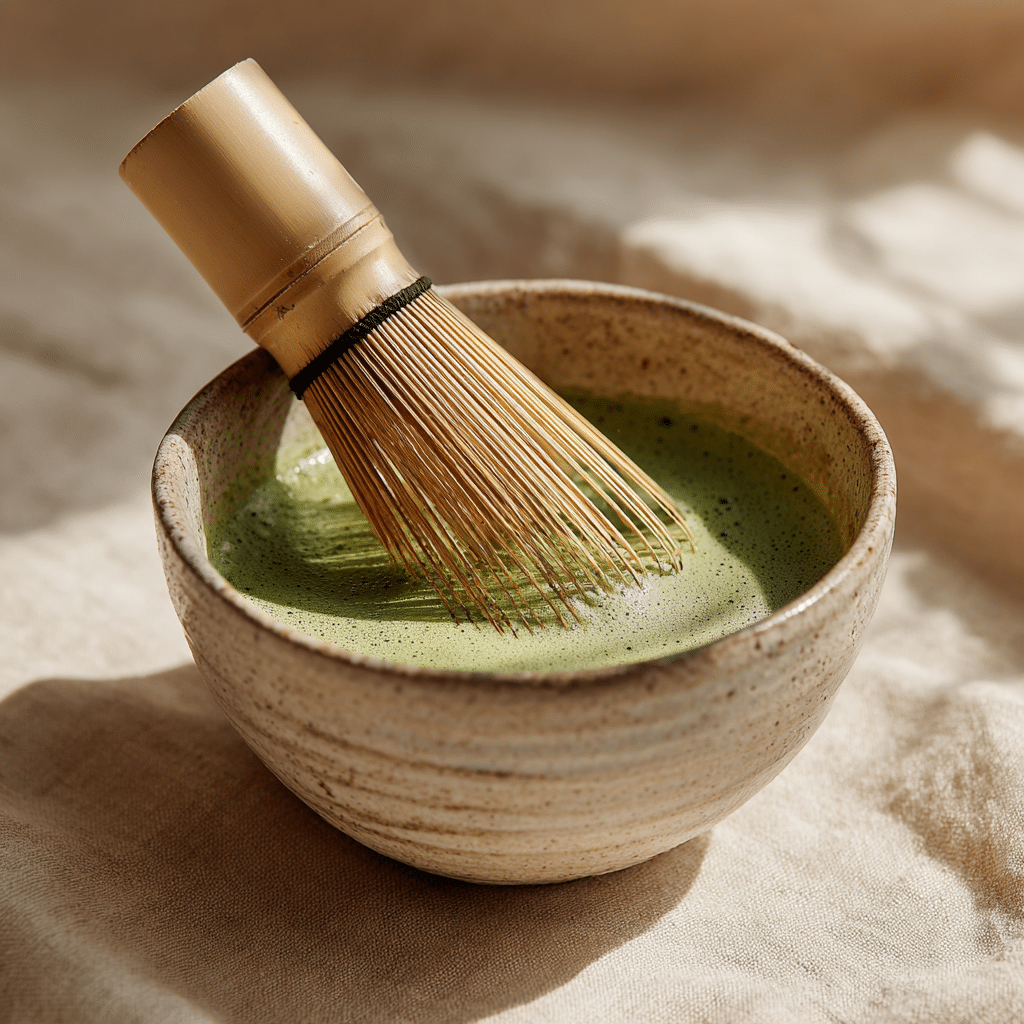
3. Fill your glass completely with ice—right up to the brim.
4. Pour in cold coconut water :leave about an inch of space at the top.
5. Slowly pour the matcha over the ice – this helps it float and gives you that layered look.
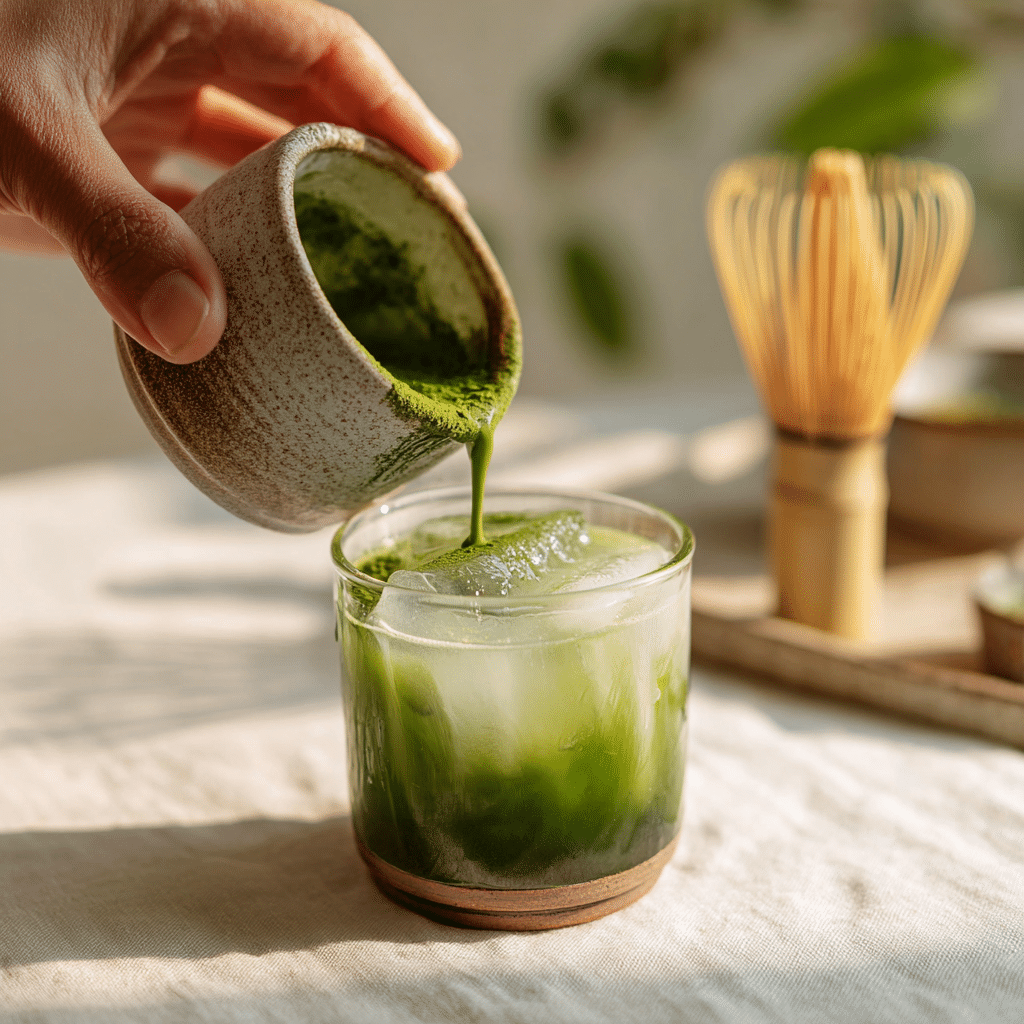
6. Stir gently if you want it blended—or sip it as-is for the full layered effect.
That’s it. Clean, fast, and better than anything bottled.
Keeping It Fresh: Storage Tips & Make-Ahead Advice
Want to prep ahead? You can—but timing matters.
Here’s how to store coconut water matcha the right way:
- Make ahead by whisking matcha and mixing it with coconut water (no ice).
- Store in a sealed jar in the fridge for up to twenty four hours.
- Don’t add ice until just before serving :this keeps it cold, not watered down.
- Shake or stir before drinking matcha tends to settle at the bottom.
This is a great option if you’re making a batch for the next morning or want a grab-and-go fridge drink.
Pro Tips From My Kitchen
- Use good matcha: Ceremonial grade is smoother and mixes better. If it tastes bitter, it’s probably too low quality or the water was too hot.
- Sift your matcha: This helps eliminate lumps and creates a more even mixture.
- Don’t skip the whisk: A fork won’t do the same job. If you don’t have a bamboo whisk, a milk frother works great.
- Add sweetener last: Taste your drink first—coconut water is already naturally sweet.
- Want a creamier twist? Add a splash of coconut milk for a light matcha latte feel.
These are the little things that turn a quick drink into a daily favorite.
Flavor Variations to Try
Once you’ve made the classic version, it’s easy to get creative. Here are a few ways I like to switch things up:
- Add a splash of coconut milk : turns it into a creamy coconut water matcha latte
- Try it with lemon juice : just a squeeze gives it a bright, citrusy twist
- Blend in fresh mint leaves : super refreshing on extra-hot days
- Drop in frozen fruit : like pineapple chunks or berries for a juicy finish. Love fruity matcha flavors? My Strawberry Matcha Latte is packed with flavor and perfect for spring or summer afternoons.
Begin simply, and adjust to your liking as you go. It’s one of those drinks that’s hard to mess up—and easy to make your own.
What If I Don’t Have Matcha?
Maybe you’re curious but haven’t bought matcha yet. No problem—I’ve been there.
You won’t get the same flavor or calm focus, but if you want to try the coconut water idea, here are a few swaps:
- Iced green tea : Make it extra strong, let it cool, then serve it over ice with a splash of coconut water.
- Herbal tea : mint or hibiscus blends taste great cold and mix well
- Chlorophyll drops or spirulina powder : not the same, but they give that green vibe
Still, when you’re ready, coconut water matcha is worth making the real way. It’s smoother, more satisfying, and honestly… kind of addicting in a good way.
If you’re into no-fuss matcha recipes, check out these no-bake matcha desserts you can whip up without turning on the oven.
Best Time to Drink Coconut Water Matcha
One question I hear all the time is: “When do you usually drink this?”
I usually go for mid-morning or early afternoon. It’s when I want something light, cooling, and energizing—but not too heavy. Around 10 a.m. or after lunch works great.
Matcha does have caffeine, so I don’t recommend it late at night. But if you’re swapping your second coffee or that sugary soda, coconut water matcha hits just right.
It’s like a little pause button in the middle of your day—cool, clean, and ready in minutes.
FAQs About Coconut Water Matcha
Can I add sweetener to coconut water matcha?
Yes, if you like it sweeter. I recommend maple syrup or honey—start with a small amount and adjust to taste.
Why is my coconut water pink?
Totally normal. It turns pink due to natural oxidation (polyphenols reacting with air). It’s safe to drink and still tastes great.
How do I keep the matcha layer floating?
Pour the matcha slowly over the ice. The cold temperature helps it sit on top for that layered look.
Is matcha caffeinated?
Yes, but not like coffee. Matcha has natural caffeine plus L-theanine, so the energy feels smoother and more focused.
Can I use coconut milk instead of coconut water?
Absolutely. It becomes more of a creamy matcha coconut latte—still refreshing, just richer.
Conclusion
There’s a special kind of joy in a drink that’s easy to make yet thoughtfully crafted. Coconut water matcha gives you energy, calm, and hydration—all in one glass, no fancy tools needed.
For me, it’s more than a recipe. It’s a quiet moment on a busy day, a quick reset between tasks, or a refreshing way to cool down after stepping in from the Carolina sun.
If this feels like a drink you’d enjoy too, you might want to save this coconut water matcha recipe to your Pinterest board for the next hot day .